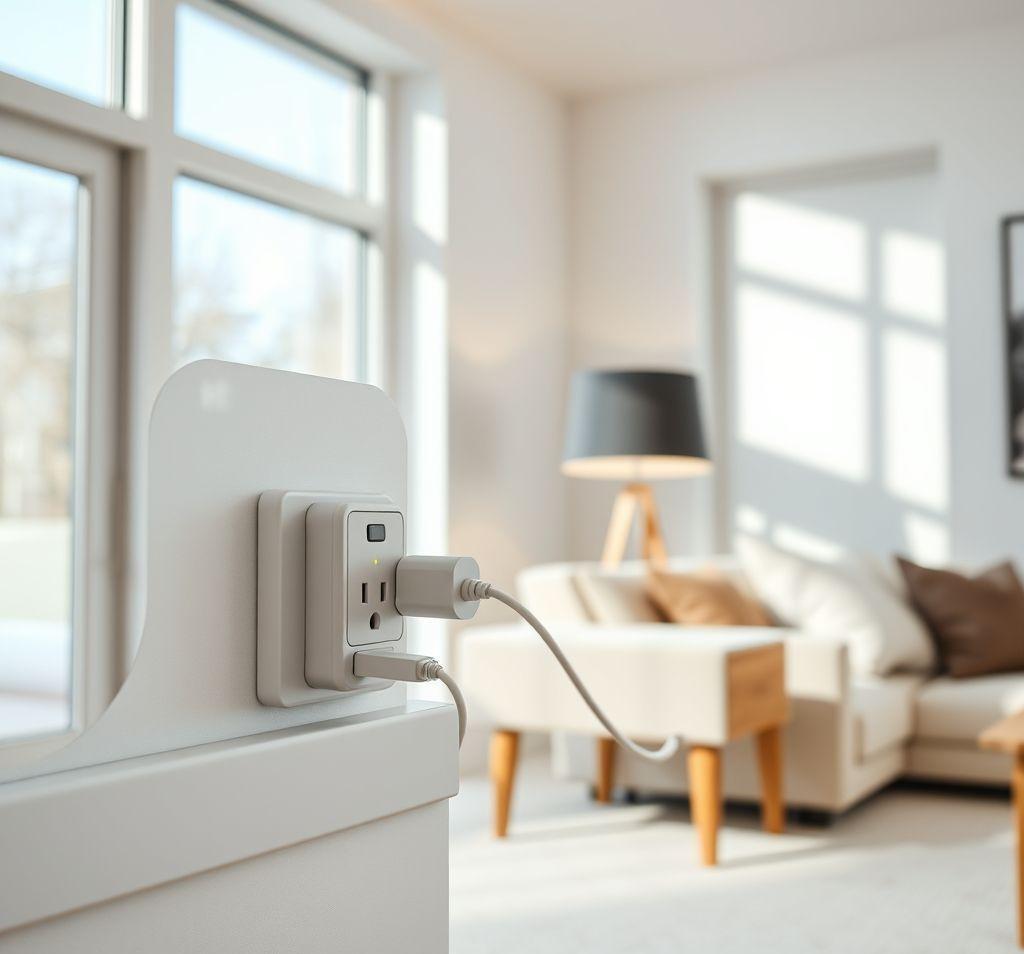The Complete Guide to Smart Plugs & Switches in 2024: Maximize Energy Savings and Automate Your Life
Welcome to the world of smart home automation! In this comprehensive guide, we’ll explore smart plugs and switches – the unsung heroes of energy efficiency and seamless home control. We’ll delve into their types, explore essential features like energy monitoring and voice control, guide you through installation, and highlight the best use cases for creating an eco-conscious and automated living space in 2024.
Understanding Smart Plugs and Switches: Types and Functionality
Smart plugs and switches are devices that bring internet connectivity to your existing appliances and lighting. This connectivity enables remote control, scheduling, and monitoring, making your home more energy-efficient and convenient. But what are the different types available?
- Smart Plugs: These are the simplest entry point. You plug them into an existing outlet and then plug your appliance into the smart plug. They are ideal for lamps, fans, coffee makers, and other devices that don’t require a wall switch. Consider the form factor – some are bulkier than others and might block adjacent outlets. Also, look for features like surge protection.
- Smart Switches: These replace your existing wall switches. They offer a more integrated look and are perfect for controlling lights, ceiling fans, and even hardwired appliances. Installation requires some basic electrical knowledge. Smart switches come in several varieties:
- Standard Smart Switches: Simply turn lights on and off.
- Dimmer Switches: Allow you to adjust the brightness of your lights, creating different moods and saving energy.
- Fan Control Switches: Specifically designed to control the speed of ceiling fans.
Beyond the basic types, consider the wireless technology used. Wi-Fi is the most common, connecting directly to your home network. Zigbee and Z-Wave require a hub but often offer greater reliability and lower power consumption. Thread is a newer protocol gaining traction, promising a more robust and interoperable smart home experience.
Key Features: Energy Monitoring, Scheduling, and Voice Control
The power of smart plugs and switches lies in their features. These functionalities not only automate your home but also contribute significantly to energy savings.
- Energy Monitoring: Many smart plugs and switches track energy consumption, providing real-time data on how much electricity your devices are using. This allows you to identify energy hogs and adjust your usage accordingly. Look for models that offer detailed reporting, breaking down consumption by day, week, or month.
- Scheduling: Set schedules to automatically turn devices on and off at specific times. This is perfect for lamps, holiday lights, or even turning off appliances when you’re not home. Consider using sunrise/sunset scheduling for lighting that adjusts automatically based on your location.
- Voice Control: Integrate your smart plugs and switches with voice assistants like Amazon Alexa, Google Assistant, or Apple Siri. Control your devices with simple voice commands, making your home even more convenient. Ensure the devices you choose are compatible with your preferred voice assistant.
- Remote Control: Control your devices from anywhere in the world using a smartphone app. This is useful for checking if you left a light on, or for turning on your AC before you get home.
Beyond these core features, some smart plugs and switches offer advanced functionalities like scene control (grouping multiple devices to operate together), IFTTT (If This Then That) integration for creating custom automations, and vacation mode (simulating occupancy while you’re away).
Installation and Setup: A Step-by-Step Guide
Installing smart plugs is generally straightforward – simply plug them into an outlet. Smart switches require a bit more effort, involving replacing your existing wall switch. Safety is paramount. If you’re not comfortable working with electricity, hire a qualified electrician.
- Turn off the power: Locate the circuit breaker controlling the switch you’re replacing and turn it off. Double-check with a non-contact voltage tester to ensure the power is completely off.
- Remove the old switch: Unscrew the faceplate and then the screws holding the switch in the electrical box. Carefully pull the switch out.
- Identify the wires: Typically, you’ll find a hot wire (usually black), a neutral wire (usually white), and a ground wire (usually green or bare copper). Some older homes may not have a neutral wire, which can limit your choice of smart switches.
- Connect the wires: Connect the wires from the smart switch to the corresponding wires in the electrical box using wire connectors (wire nuts). Follow the instructions provided with your smart switch carefully.
- Secure the switch: Tuck the wires neatly back into the electrical box and screw the smart switch into place. Attach the faceplate.
- Turn the power back on: Turn the circuit breaker back on.
- Connect to your network: Download the manufacturer’s app and follow the instructions to connect the smart switch to your Wi-Fi network.
After installation, most smart plugs and switches require you to connect them to your home’s Wi-Fi network through a dedicated app. Follow the app’s instructions to complete the setup process, which typically involves entering your Wi-Fi password and naming the device.
Best Use Cases for an Eco-Conscious Home
Smart plugs and switches offer numerous opportunities to create a more eco-conscious home. Here are some effective use cases:
- Eliminate Phantom Load: Many devices consume power even when turned off (phantom load). Use smart plugs to completely cut power to these devices when they’re not in use, such as TVs, game consoles, and chargers.
- Automated Lighting: Use smart switches to schedule lights to turn off automatically when you leave a room or go to bed. Combine this with motion sensors for even greater energy savings.
- Smart Heating and Cooling: Integrate smart plugs with portable heaters and air conditioners. Use scheduling and energy monitoring to optimize their usage and prevent them from running unnecessarily. Consider using smart thermostats for whole-house heating and cooling control.
- Water Heater Control: Use a smart plug to schedule your water heater to turn off during peak energy hours or when you’re away from home. This can significantly reduce your energy bill.
- Holiday Lighting: Easily control your holiday lights with smart plugs, setting schedules for them to turn on and off automatically.
By strategically implementing smart plugs and switches, you can significantly reduce your energy consumption, lower your utility bills, and contribute to a more sustainable lifestyle. Remember to regularly review your energy consumption data and adjust your schedules as needed to maximize your savings.
Conclusion
Smart plugs and switches are powerful tools for creating an energy-efficient and automated home in 2024. From understanding the different types and their features like energy monitoring and voice control, to mastering the installation process and exploring various use cases, you’re now equipped to transform your living space. By embracing these smart technologies, you can not only save money and reduce your carbon footprint but also enjoy a more convenient and comfortable lifestyle. Start small, experiment with different automations, and watch as your home becomes a smarter, greener, and more responsive environment.



